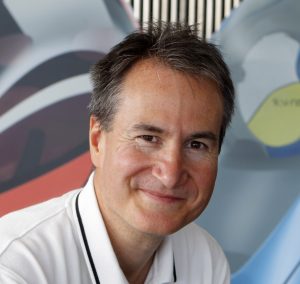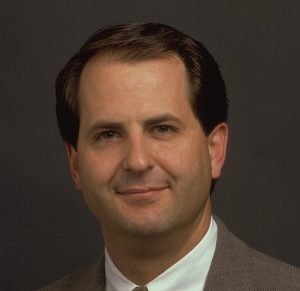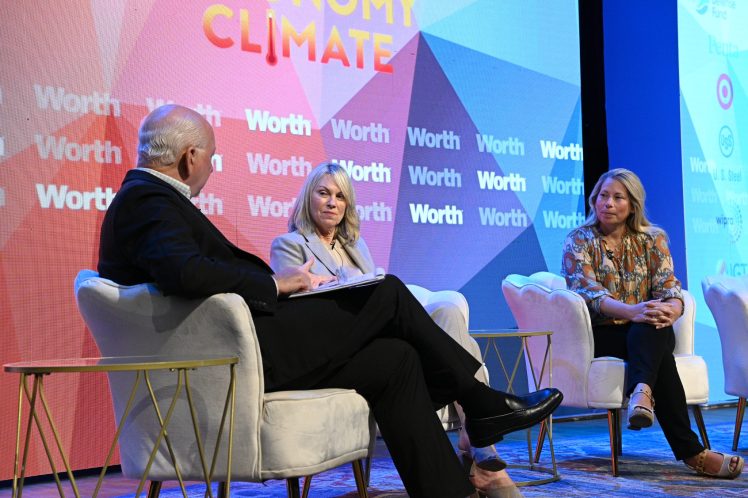
Cities are shaped by transportation systems. What infrastructure and mobility innovations will define 21st century urbanism? Read excerpts from the discussion below.
KIRKLAND: Half the global population is in cities, and it’s going to be 70%. Three billion will join the middle class over the next 20-25 years, and they aspire to live like Americans. If they drive cars and burn energy the way we do, we’re going to have a sustainability challenge. How do you see this shift unfolding?
BORRONI-BIRD: Two of the major trends facing us are urbanization and aging. The solution to addressing these trends in terms of mobility will be along five vectors: small, shared, electric, networked, and autonomous. A small vehicle is easy to park and maneuver; a networked vehicle can manage traffic and avoid collisions; an autonomous vehicle enables mobility for the aged population; an electric vehicle produces zero local emissions and encourages the use of diverse, renewable energy sources. We see the solution for urban mobility in the EN-V—an electric networked vehicle capable of manual and autonomous operation.
GROB: We’re on the verge of dramatically lowering the cost of networking vehicles and improving vehicle-to-vehicle applications, where you can form a connection with another vehicle and actually influence its safety systems. We’re also working on wireless charging of electric vehicles. When you fuel with regular gasoline, you’re putting enough energy in that car in a couple of minutes to run it for a week. It’s unrealistic that in the near future you’ll be able to charge a battery that fast. Wireless charging means you can actually put things under the road and just drive on top.
YUSUF: How do you use sensor-enabled apps to rethink the use of resources in the city, whether it’s transportation, water, or other aspects of city government? We put sensors on parking spots to detect the presence of a car. You can put out 1,000 sensors in an afternoon and be up and running by the end of the next day.
EBERHARD: A lot of the transportation infrastructure we’ll have in ten years doesn’t exist today. We’re going to create transit-oriented development, reshaping the urban fabric so people don’t need cars, so they’re close to where they live, work, and play. The issue is not technology; it’s policy and process. It typically takes transportation infrastructure projects 10–20 years to go through environmental regulations, funding issues, and governmental gridlock. The design and construction part is what’s speeding up significantly, by factors of 20–40%. By building projects in a computer, simulating, analyzing, and visualizing them, we’re able to have better predictability so that they get done on schedule.
YUSUF: We need smarter local and municipal governments and policies. There’s technology for smarter transportation, water, hygiene, and medicine, but the tradeoffs that bureaucrats make don’t make sense.
BORRONI-BIRD: Connectivity is what vehicle manufacturers can do. If the majority of vehicles have cell phones in them, what can we do to improve traffic flows, safety, and parking through connectivity?
EBERHARD: A lot of planning policies are changing to disincentivize vehicular traffic and promote mass transit.
BORRONI-BIRD: I don’t think the solution is public transport per se. There’s a reason the roads are congested. It’s because people like to be in a vehicle, and you’re fighting human nature to prevent that from happening. Shared vehicles would be an example of a public transport system that provides personal mobility and could be very efficient. Just as cities buy buses, in the future they could buy a fleet of small vehicles and they can intelligently combine the two to optimize a system.








